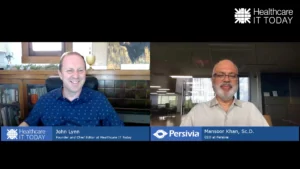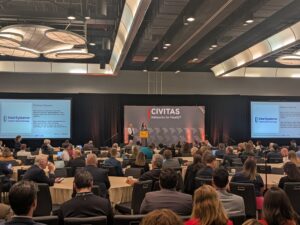Mansoor Khan, like other health care transformers, wants AI to help clinicians “do the job better, faster, cheaper.” As CEO at Persivia, he recognizes that different types of AI are needed for different parts of the workflow. This is particularly true if you really want to address the challenge that Persivia is taking on, value based care in all its varieties.
For instance, a physician’s workflow probably begins with data intake, either from a patient interview or from incoming records. Natural language processing can be employed to structure the information.
Next perhaps is risk stratification, for which predictive AI is appropriate.
Data aggregation management, care management, quality management, cost utilization management, and risk management are all crucial tasks that require their own digital solutions.
Generative AI is probably most valuable late in the chain, where patient communications occur. Patient engagement nowadays can be far beyond canned SMS messages with multiple-choice questions. (“Are you feeling good today?”) AI can check a response to extract the meaning (e.g., depression) as well as the emotional tenor.
But generative AI is not for all stages of the workflow, Khan says. When asked a question that requires sophisticated data processing—such as to find all patients meeting a certain set of conditions—general AI is likely to do a bad job. However, a special generative AI model trained on your own data might perform well.
Persivia handles many workflow tasks for a variety of disciplines and clinical settings that use a variety or EHRs and deal with multiple value-based care systems from Medicare and elsewhere. Persivia can handle lots of data and patients. It might process thousands of PDFs to see whether doctors made correct decisions on a class of patients. An administrator might be able to bring quality problems about a particular population to the surface in a few clicks.
Khan points out that data is “living and breathing.” Constant changes in structure and sources tend to break the systems designed for data intake and processing. But the flexibility of Persivia’s design allows them to add a new data source in 90 to 120 days, whereas traditional databases might take a year and a half.
Watch the video for more details about how Persivia is applying each type of AI, its importance in modern care management, and the difficulties in regulating AI.
Learn more about Persivia: https://persivia.com/
Listen and subscribe to the Healthcare IT Today Interviews Podcast to hear all the latest insights from experts in healthcare IT.
And for an exclusive look at our top stories, subscribe to our newsletter and YouTube.
Tell us what you think. Contact us here or on Twitter at @hcitoday. And if you’re interested in advertising with us, check out our various advertising packages and request our Media Kit.
Persivia is a proud sponsor of Healthcare Scene.




